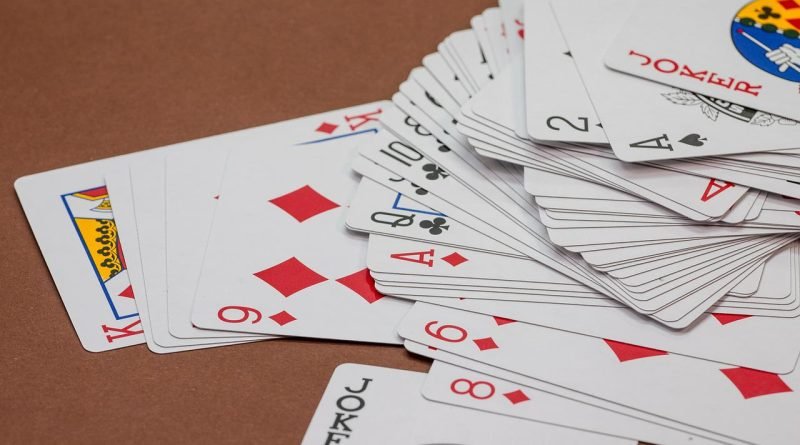How to Play 500 Rummy Card Game and the Rules
500 Rummy, Rummy 500 or 500 Rum, and occasionally misnamed Gin Rummy, this version of rummy has some expanded rules that allow more flexibility than regular rummy games. A series of several hands are played and scored based on the cards that have been played onto the table. When a player’s score reaches 500 the game ends and that player wins. This game has many variations and some players have their own “house rules” of play. It is a very adaptable game and is fun to play no matter how it has been adjusted.
The Deal and the Deck
It is played with a 52-card deck and two jokers. If more than five people are playing, two decks should be shuffled together. It is possible to play the game with any number of people, but is best between two and eight players.
The dealer is chosen at random and each player is dealt cards, one at a time until each player has seven cards. The remaining cards are put in the middle of the table, face down to become the pick-up pile and the top card of that pile is turned over next to it to start the discard pile. Once a few rounds have been played each player may choose to pick up a card from further down the discard pile, but must take all of the cards that are on top of it also. The bottom card that was picked up must be used in a meld immediately. If the player chooses only the top card, it does not need to be used immediately.
Playing Rummy 500
The player to the left of the dealer starts by either taking one card from the pick-up pile or one from the discard pile. He may then meld any cards that he is ready to by placing them on the table, face up, in front of him. The player discards and the turn moves to the player on his left.
Melding and Playing the Cards
Players may meld the following cards:
Groups: At least three cards of equal numeric value such as three 4s or three Jacks.
Sequence: At least three cards of the same suit that run sequentially such as 3,4, and 5 of spades.
Once a player has melded cards, he is then eligible to use his cards as extensions of other players melded cards. For example: if another player has melded three 7s and the player has a 7, he may put down his 7 as an extension of those sevens.
If his card was playable on more than one player’s melded cards, he must state which one he is playing on. So if his 7 also could have been played on another players sequence he must state which one it is being played on. The 7 that he put down now becomes playable for other players, so if he put it down as an addition to the 7s and another player has a 7, he may play that card in his meld area on his turn and only if he has already laid down his meld.
Using Jokers
Jokers are wild and can be substituted for any card. Once the joker is played other players are free to pick up the joker if they have the card that it was originally intended to be, and substitute the “natural” card for the joker. This makes the joker free to use in that player’s hand.
Calling Rummy
If a player discards a card that could have been used on someone else’s melded cards or that creates a group or sequence with cards in the discard pile, this is a Rummy. Any player besides the player that laid it down may call “Rummy” and take all applicable cards in the discard pile. He must then immediately meld the cards and any others that can be melded.
If the card that was laid down was the last card in a player’s hand, Rummy cannot be called. He must use the card and will not have a discard, he will then float as described below.
Ending the Game
When a player uses all the cards in his hand either by melding or with a discard the play ends. If the player uses all of his cards, but does not have a discard, the player “floats” and play continues around the table until he can produce a discard. This gives the others at the table a last chance to play cards in their hands. On his next turn, he picks up a card from the pile and can then discard it.
Understanding Deck Cards and Game Terminology for Card Games
Learning the rules of a card game will come easier if the terminology is learned first. There are some variations on terms from country to country or from game to game, but for the most part, card game terminology is universal in the English language.
Playing Card Deck Basics
A deck is the word for the set of cards, in its original form. Most card games played in the U.S. and English speaking countries use a “standard” 52-card deck. Brand new decks contain between two and four jokers which are optional cards in some games. Many times a joker will be “wild” or they are considered a “wild card”, meaning that it can take the place of any card in play; this varies according to the rules of the game.
Playing Cards and Suits
A deck of playing cards come in a variety of face values. The numbered cards are numbered from two through ten, and the “face cards” are Jack (J), Queen (Q), King (K). There is also a card called the “Ace”, which is depicted by the letter A. This card can, when played in numerical succession, be valued as the lowest card in the deck or the highest. In numerical order, the cards are: A, 2, 3, 4, 5, 6, 7, 8, 9, 10, J, Q, K.
There are four of each value of card in each deck – one of each suit – equaling 52 cards in all, excluding Jokers. The suits are divided into two red colored suits and two black suits. The red suits are hearts and diamonds and the black colored suits are clubs and spades. So in each deck, each card from A through K has one of each suit. There are no duplicate cards in a deck, only one of each card in each suit.
Terminology for the Start of Card Games
Before each card game is started the cards are “shuffled”. This requires mixing the cards up in random order in such a way that none of the players knows any card’s position in the deck. Once the shuffle is complete, very often someone is asked to “cut” the cards. Cutting the cards simply means that the person takes the deck in their hand, removes some of the cards from the top of the deck and places them on the bottom. This can be done with as many cards as the player chooses, but must be done with no one seeing what the cards are.
Once the cards are prepared, the “dealer” then “deals” the cards to each player, if that is what is required in the rules of the particular game – some games do not require dealing. This is accomplished by giving one card to each player, usually face down, in successive order until everyone has a card, then repeating the process until everyone has the necessary amount of cards.
At this point, in some games like online casinos, the deck is turned over, face down, onto the middle of the playing surface and becomes the “pick-up pile” and one is placed face up next to it which becomes the start of the “discard pile”. The pick-up pile, also called the draw, stock, talon, or widow, is the area from which any future cards are taken or “drawn” from for players to use in their hands and the discard pile is the place to put unwanted cards when a player is done with his turn. These piles are not used in all card games but are very common in games such as 500 Rummy, Crazy Eights and Sergeant Major.




